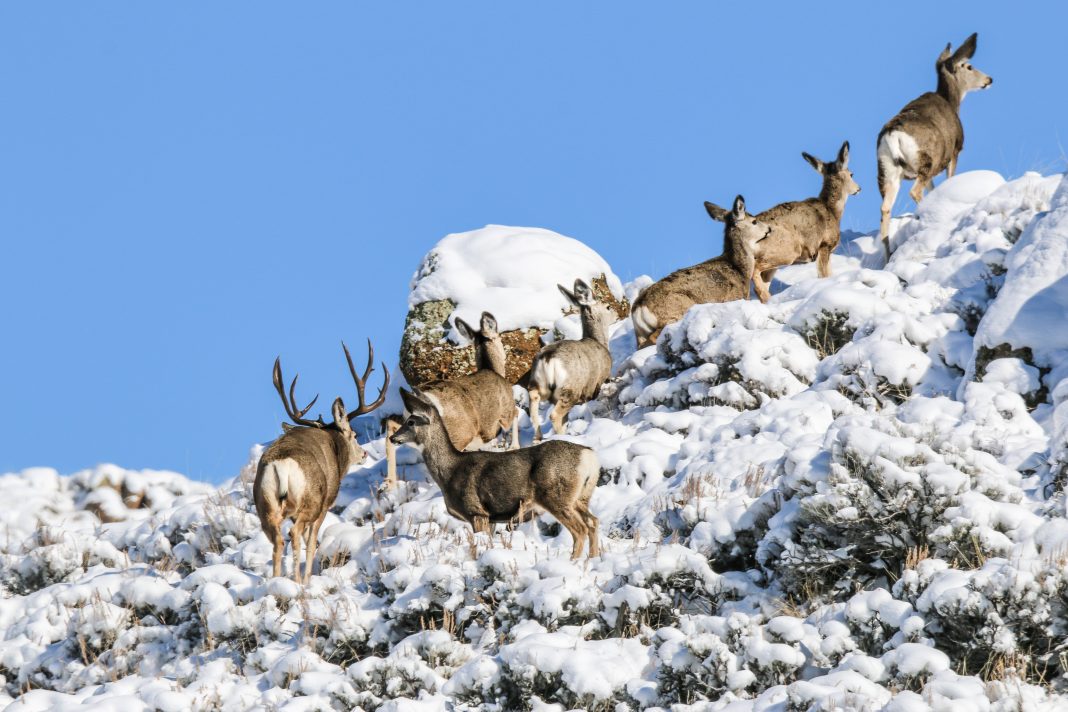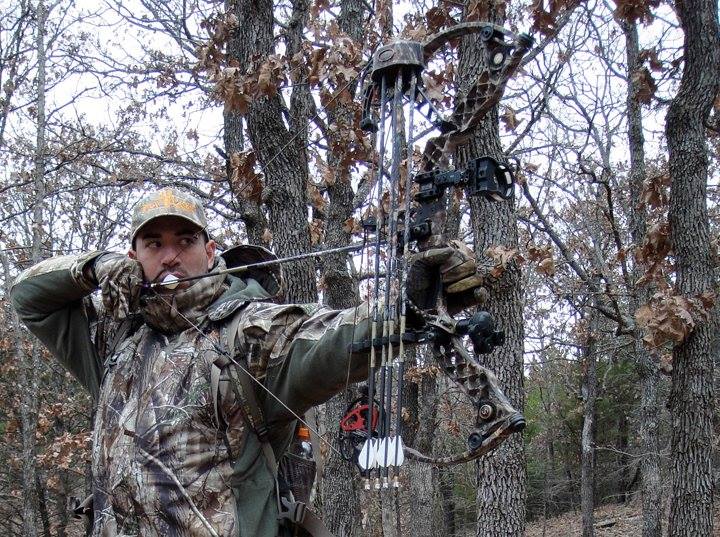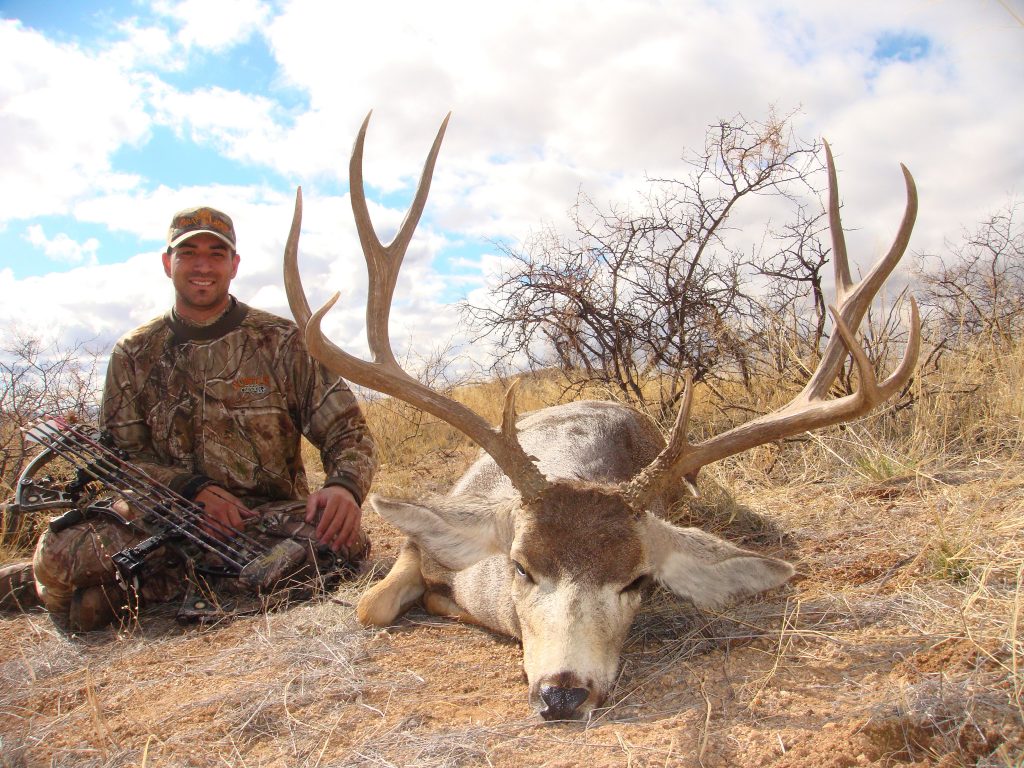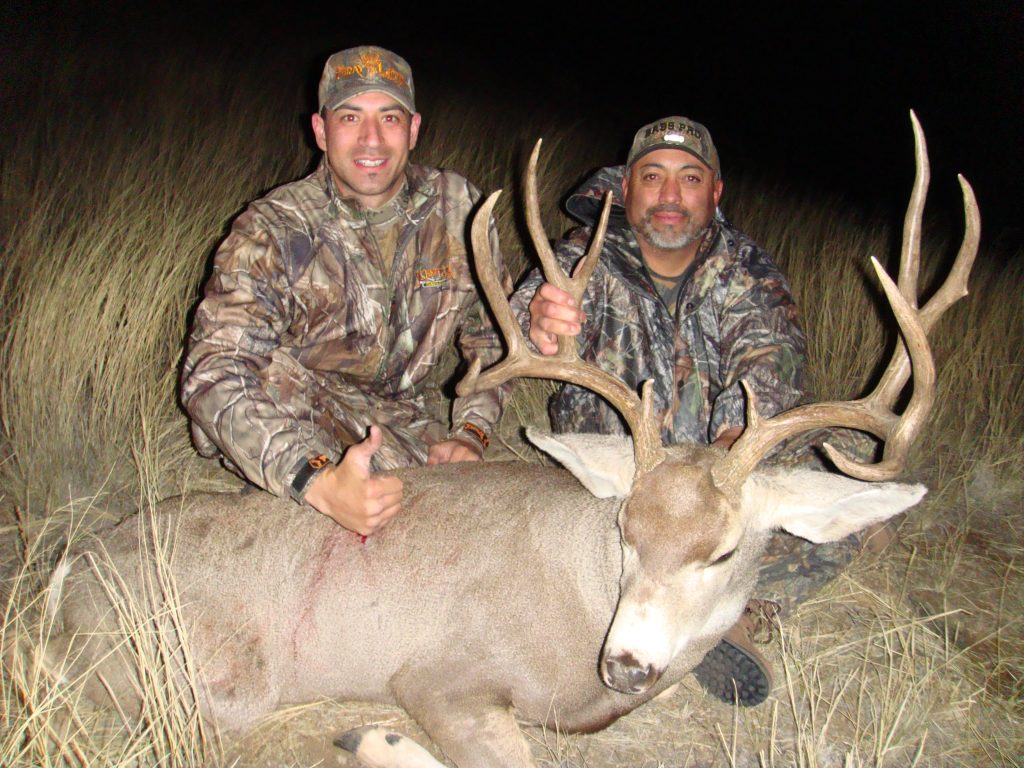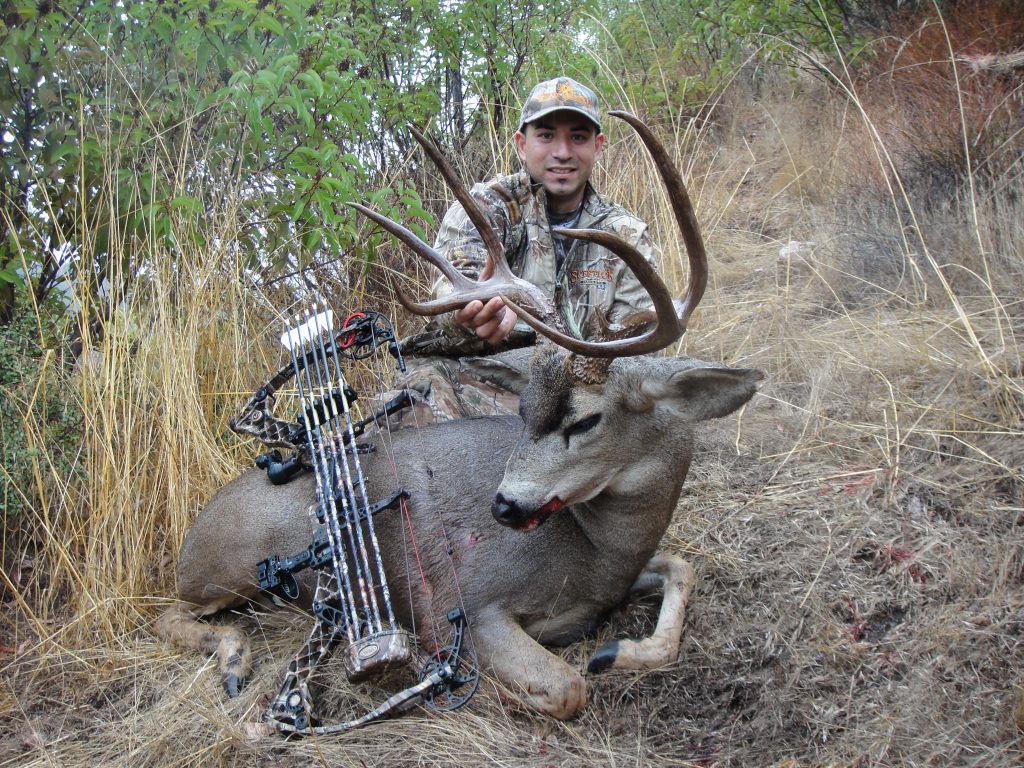Just the idea of the rut may evoke thoughts of heavy, chocolate antlered bucks lifting their noses into the crisp fall air as the warmth of their breath leaves clouds of steam behind them while they chase after estrous does. If you are anything like me, the Mule Deer rut is a special time of year and one that every hunter in North America anticipates more than any other. Besides the obvious traits of the rut that make it advantageous for hunting, such as the “Big Boys” coming out to play, there are other characteristics of the rut which you can take advantage of in order to increase your chances of anchoring a good buck.
Let’s first discuss opportunity for the bow hunter. While many of you wait years upon years trying to pile up the points in order to draw a coveted third season rifle tag or once-in-a-lifetime late season rifle hunt, you can be out in the field chasing these large bucks with a bow every year. While there are lots of online resources available to the dedicated hunter, many times we are left wondering how to go about such a daunting task without prior experience.
In reality, it is easy. Your greatest asset and tool is your mind, and in subsequent articles, I will talk about ways to sharpen and use that greatest asset. If you put your mind to the job, you will always be successful, as long as you never quit. Remember, as we go through this article failure is always a possibility, but since quitting is not an option, you will earn every trophy, every time – so get your mind right and get after it!
The best late season hunts are available in many states throughout the West, including Utah, Arizona, Idaho, California, Oregon, Montana, and New Mexico. Many of the tags in these areas are OTC or general draw tags. In order to get yourself in the game, you have to set a plan. Remember that most of the states mentioned have a late archery hunt with top end bucks available to you.
Narrowing down a unit is as simple as deciding what your expectations are. For instance, do you want to hunt late season Blacktails or Desert Mule Deer? November rut hunts in Utah and Idaho or January rut hunts Arizona? In general, the rut spreads like a wave starting from the Western seaboard in late September for Blacktails and then surging East from the Northern states in November, finally ending in the Southern deserts around the middle of December through January.
If you have the time and resources, you could literally bow hunt the rut with OTC archery tags for four months straight! A little-known fact for you diehards.
We can now categorize the types of hunts that you can look for. Depending upon the state, time of year, as well as terrain, you will be hunting migration corridors, winter range, or staging areas.
For obvious reasons, in mountainous regions, such as Idaho, Montana, or Utah you need large amounts of snow to trigger a mature buck to leave the high country. Usually, in heavily pressured areas, the bucks will not migrate unless it is under cover of darkness, or unless they are pushing snow with their briskets i.e. they have no choice but to move to winter range.
It takes very little snow or cold weather to move the vast majority of does and young bucks. This is often referred to as staging. The bucks that most of us are after will do everything they can to stay up on the highest ridges, making them extremely difficult to access and hunt. Hunting heavy snow often requires ambush techniques since it can be difficult to stalk in crunchy snow. Some of my good bow hunting friends use this technique to get shots on big archery muleys.
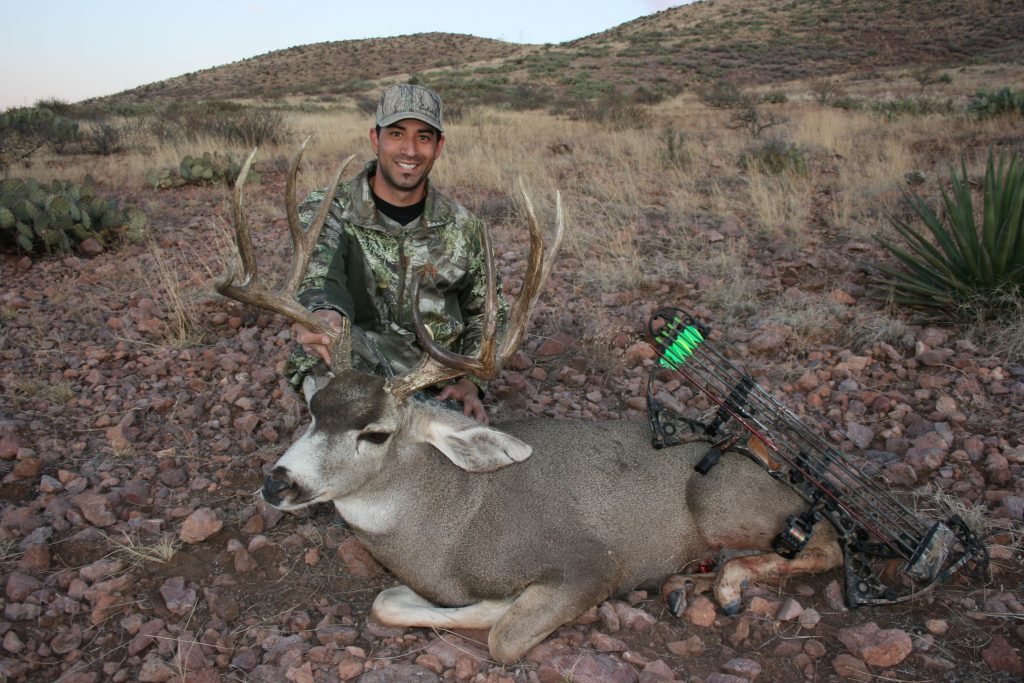
Remember that hunting migration corridors are all about timing. If you know the snow is flying and will dump a foot or more in the next day or two, hit the road right away to get into position since the primary migration will be over in less than a week. There will always be scenarios where a few deer will come by for a few weeks thereafter, however, instead of seeing a handful you can see up to 150 deer within 20 yards of you each day on a hot route, which is directly after that first hard snowfall. It is a special moment if you can get it figured out. It will require your honest dedication to a hunt area with known migrating herds to succeed.
You will want to look for primary ridges that lead to known winter range. Remember that deer, like people, will travel the path of least resistance. They don’t want to go up a big mountain any more than you or I. In general, they will always keep their elevation and stay on high ridges that lead them in the path of least resistance to winter ground. Look closely for ridges that are cliffed out on both sides, bottlenecked, or choked to have the most deer funnel by your set up.
Another highly effective technique is spot and stalk winter range, provided there is little snow to allow for quiet stalks. This type of hunting allows you to cover lots of ground searching for the perfect buck. With the rut will come more eyes than summer and early fall hunting. The does will always be the ones to bust your stalk way before an unsuspecting buck. I cannot tell you how many times I have been busted on my final approach by a mature doe. Remember that every small group will generally consist of a hierarchy and the matriarch doe will always be posting her troops to keep a lookout for danger.
If you are hunting the pre-rut, you may have a bit of success utilizing fawn distress bleats. This triggers curiosity from most does by alerting them to possible danger to the yearlings in the group. If the doe the buck is on comes to take a peak, she will tow the buck in with her giving you your chance to arrow him. Use the terrain to your advantage here. Never use a fawn bleat in an area where you are exposed without cover to conceal your outline. Discharge the bleat in a direction facing away from the herd, and use it as a last resort to bring them in as this will alert all of them to your position.
I have taken one of my best muley bucks with this technique. The buck was bedded 155 yards from me with does all around. When one of the does got up and started to feed I gently blew the call and she came over towards me. The buck got up, nosed her towards me some more, proceeded to breed her at 43 yards, and once he was done I released an arrow on him at 43 yards. That is as good as it gets. Do not rely solely on any one tactic, but rather have an arsenal of tactics and ideas at your disposal and use them in challenging situations to pull out a victory!
My favorite rut hunt is big muleys in the desert. This hunt, in my opinion, is one of the most challenging. Not only are there fewer animals in general but the country you will be hunting is unforgiving. You have to be on you’re “A” game to hunt mature desert bucks, but it’s possible. Let’s start out with the basics. There is no GOOD unit to start out in, so don’t get caught up in not knowing where to go. Also, don’t be that guy on a forum asking for units to hunt. People guard desert bucks like a pirate hoarding treasure.
Your first goal is to start by picking a unit and committing, then get boots on the ground and figure out where the green up areas are from the past monsoonal season. I just gave away a big key; did you pick up on it? Wherever it rained the most will likely have the best feed for yearlings. The doe groups will be there, even if the bucks are not there yet.
Once you locate the green-up areas from monsoonal moisture, you will be able to locate the larger herds of does since they are highly nomadic. Another useful suggestion is to look at areas surrounding milo, corn, winter wheat, alfalfa or chili fields since the deer will usually go into these fields for an easy meal. Once these areas are located, you can hone in on prospective shooters by checking on the known doe groups until you see a good buck.
Stalks can be long and grueling. I have had many desert stalks last most of the day and they can leave you hungry and parched. I suggest carrying a platypus bladder with a couple cups of water folded in your cargo pocket along with some type of hard candy to keep your sugars up. If you stalk a big buck all day and get into range, sometimes your sugar and dehydration levels can blow the opportunity by shaking too much at full draw. Keep aware of what your body is telling you and work yourself into a position of success by listening to yourself and being aware of your surroundings. Only stalk aggressively when you know it is the right moment to do so, hence the saying “only fools rush in”.
Remember that mature bucks get to that age by being cagey, smart animals. One reason why so few bow hunters are successful year after year is they are impatient, lazy, or lack instinct. Not many people will admit that they are lazy or impatient, however, going back to camp for lunch is out of the question. In order to achieve success, you have to hunt all day each and every day of your hunt. Take your time to observe the behavior elements of your quarry and witness their particular mannerisms. By doing so, you will sharpen your mind on what to do and what not to do. Hunters that go to camp or take a nap will rarely capture regular success because they are not delegating the amount of effort to be consistently successful.
For example, if you take into consideration the time you could spend in camp every day, say 3 hours for six days, that’s 18 hours or a total of three more hunting days afield that you could be learning and searching. In addition, I have personally arrowed well over a dozen mature muleys around the lunch hour.
Another quick and useful tip will be the timing of a cold-snap close to the rut. Hot weather is the killer to a quality rut hunt since most rut activity will be done with the cover of darkness. Anytime the weather forecast indicates a cold-snap close to rut dates get out there as it will almost always ensure more deer movement. Make no mistake that the rut will happen, cold or hot, snow or no snow. Positioning yourself in a place to know the behavior of the animals during these times is of utmost importance.
Those that work the hardest always achieve the most success, and there is never a substitute for that work ethic. Late season hunts are difficult and generally leave you with little energy once finished. However, the rewards are grand and a potential wall-hanger will be out looking for love. The only question is, will you be on your couch looking at the pages of a forum, or will you be out there busy killing that buck of a lifetime? I hope to see many of you out in the field in the years to come. Good luck to you all this season and hopefully you will be able to take advantage of the amazing hunting that awaits us all if we desire to capitalize on it.
Remember, stay focused, work harder than the next guy, and shoot straight.


